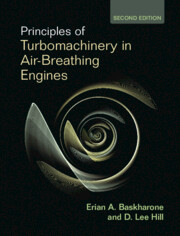Refine search
Actions for selected content:
36846 results in Cambridge Textbooks
2 - Where Does Health Come From?
- from Part I - Patients
-
- Book:
- Economics of Healthcare
- Published online:
- 02 November 2023
- Print publication:
- 23 November 2023, pp 15-28
-
- Chapter
- Export citation
Copyright page
-
- Book:
- Large-Scale Data Analytics with Python and Spark
- Published online:
- 15 December 2023
- Print publication:
- 23 November 2023, pp iv-iv
-
- Chapter
- Export citation
8 - Implementing Classical Methods: k-Means and Linear Regression
- from Part III - Machine Learning for Big Data
-
- Book:
- Large-Scale Data Analytics with Python and Spark
- Published online:
- 15 December 2023
- Print publication:
- 23 November 2023, pp 254-304
-
- Chapter
- Export citation
Preface
-
- Book:
- Large-Scale Data Analytics with Python and Spark
- Published online:
- 15 December 2023
- Print publication:
- 23 November 2023, pp xi-xvi
-
- Chapter
- Export citation
5 - Spark SQL and DataFrames
- from Part II - Big Data Frameworks
-
- Book:
- Large-Scale Data Analytics with Python and Spark
- Published online:
- 15 December 2023
- Print publication:
- 23 November 2023, pp 109-174
-
- Chapter
- Export citation
10 - Health Insurance as a Product
- from Part III - Health Insurers
-
- Book:
- Economics of Healthcare
- Published online:
- 02 November 2023
- Print publication:
- 23 November 2023, pp 129-140
-
- Chapter
- Export citation
4 - Health Insurance and Demand for Medical Care
- from Part I - Patients
-
- Book:
- Economics of Healthcare
- Published online:
- 02 November 2023
- Print publication:
- 23 November 2023, pp 45-56
-
- Chapter
- Export citation
Part I - Patients
-
- Book:
- Economics of Healthcare
- Published online:
- 02 November 2023
- Print publication:
- 23 November 2023, pp 1-70
-
- Chapter
- Export citation
7 - The Healthcare Labor Force
- from Part II - Providers
-
- Book:
- Economics of Healthcare
- Published online:
- 02 November 2023
- Print publication:
- 23 November 2023, pp 89-101
-
- Chapter
- Export citation

Languages of the World
- An Introduction
-
- Published online:
- 21 November 2023
- Print publication:
- 07 December 2023
-
- Textbook
- Export citation

Principles of Turbomachinery in Air-Breathing Engines
-
- Published online:
- 18 November 2023
- Print publication:
- 19 October 2023
-
- Textbook
- Export citation
A.9 - Error Function
- from Appendices
-
- Book:
- Integrated Circuit Fabrication
- Published online:
- 01 December 2023
- Print publication:
- 16 November 2023, pp 649-652
-
- Chapter
- Export citation
15 - Relativistic corrections
-
- Book:
- Introduction to Quantum Mechanics
- Published online:
- 15 May 2024
- Print publication:
- 16 November 2023, pp 360-373
-
- Chapter
- Export citation
1 - Uncertainty
-
- Book:
- Introduction to Quantum Mechanics
- Published online:
- 15 May 2024
- Print publication:
- 16 November 2023, pp 3-14
-
- Chapter
- Export citation
Copyright page
-
- Book:
- Integrated Circuit Fabrication
- Published online:
- 01 December 2023
- Print publication:
- 16 November 2023, pp iv-iv
-
- Chapter
- Export citation
Appendix D - Selected MATLAB Code
-
- Book:
- Introduction to Intelligent Systems, Control, and Machine Learning using MATLAB
- Published online:
- 27 November 2023
- Print publication:
- 16 November 2023, pp 436-458
-
- Chapter
- Export citation
Appendix C - Introduction to Simulink
-
- Book:
- Introduction to Intelligent Systems, Control, and Machine Learning using MATLAB
- Published online:
- 27 November 2023
- Print publication:
- 16 November 2023, pp 423-435
-
- Chapter
- Export citation
A - Delta function
-
- Book:
- Introduction to Quantum Mechanics
- Published online:
- 15 May 2024
- Print publication:
- 16 November 2023, pp 425-428
-
- Chapter
- Export citation
10 - Particles in magnetic fields
-
- Book:
- Introduction to Quantum Mechanics
- Published online:
- 15 May 2024
- Print publication:
- 16 November 2023, pp 253-278
-
- Chapter
- Export citation
9 - Etching Technologies and Chemical–Mechanical Polishing
-
- Book:
- Integrated Circuit Fabrication
- Published online:
- 01 December 2023
- Print publication:
- 16 November 2023, pp 448-502
-
- Chapter
- Export citation
